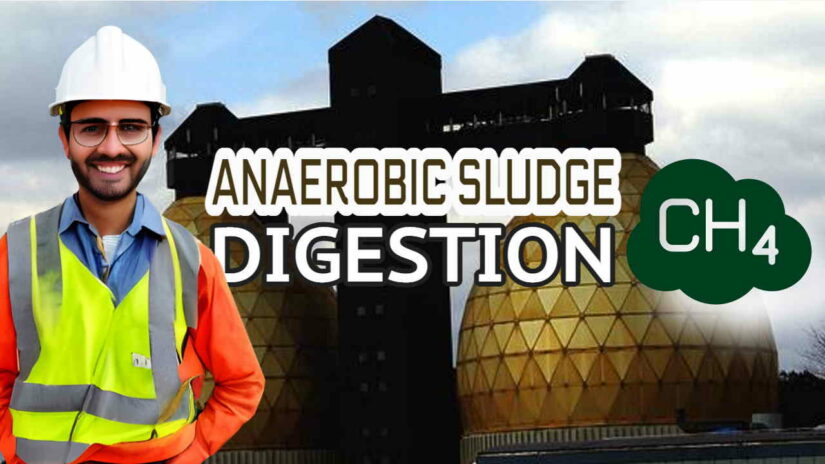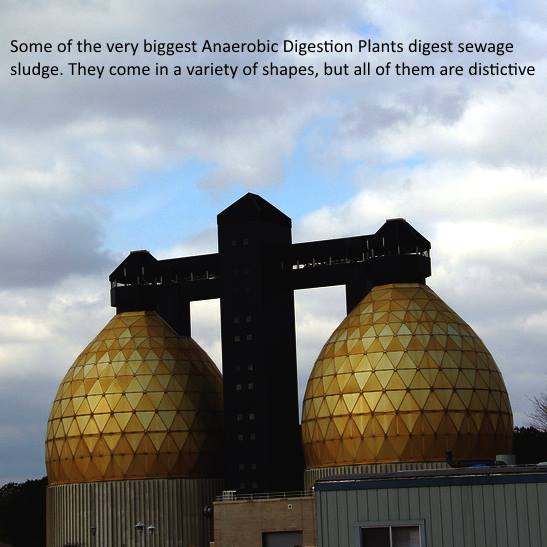
Anaerobic Sludge Digestion – A Sustainable Solution for Wastewater Treatment
Not only is anaerobic sludge digestion a sustainable solution for wastewater treatment (more often called sewage treatment!), due to its output of net energy which is also renewable energy. But, also by aiding sewage treatment, it helps to protect all of us from illness, and disease.
Wastewater treatment is a crucial process for maintaining a healthy environment. The treatment works (sewage works) generate a significant amount of sludge every day (yes, basically we're talking about crap!).
Utility companies (WWTWs) that treat sewage have found that AD sludge digestion is the least expensive way to dispose of their sewage solids. Naturally, the process is becoming a popular method to treat this sludge, as they have found that offers numerous benefits to water utility organizations.
In this article, we will discuss the AD sludge digestion process, its benefits, and its applications.
What is Anaerobic Sludge Digestion?
Anaerobic sludge digestion is a biological process that breaks down organic matter in sludge under anaerobic conditions. During this process, microorganisms convert organic matter into biogas, which primarily consists of methane (CH4) and carbon dioxide (CO2). This process occurs naturally in wastewater treatment plants, but it can also be enhanced through state-of-the-art technology.
Benefits of AD Sludge Digestion
Anaerobic sludge digestion offers several benefits, which include:
- Hygienization of Sludge: Anaerobic digestion is a natural process that destroys pathogens, viruses, and other harmful microorganisms in the sludge. As a result, the treated sludge is hygienic and safe for disposal.
- Reduced Sludge Quantity: The anaerobic digestion process reduces the mass of sludge, which reduces the overall costs of its disposal. The reduced sludge quantity also means that less land is required for its disposal.
- Biogas Production: One of the most significant benefits of anaerobic digestion wastewater treatment is the production of biogas. The biogas is a renewable energy source that can be used to generate heat and electricity. This reduces the dependency on fossil fuels, which is environmentally friendly.
Applications of Sludge Digestion
Sludge digestion when done anaerobically has numerous applications, which include:
- Power Generation: Many wastewater treatment plants are using biogas to generate heat and electricity to power their operations. Some of them are even fully powered by biogas.
- Fuel for Vehicles: Water utility companies are also using biogas as fuel for their vehicle fleets. This reduces the dependency on fossil fuels and contributes to a cleaner environment.
- Excess Electricity to the Grid: The excess electricity generated from biogas can be supplied to the electricity grid. This provides an additional source of electricity for homes and industries.

© Copyright Kristian Bjornard licensed for reuse under CC BY 2.0 flickr.com
What is Sewage Sludge?
To understand anaerobic sludge digestion it is essential to understand what sewage sludge is. To understand the basics of that suggest that our readers watch our video below:
Power from Anaerobic Digestion of Sludge Enables WWTW Operators to Achieve Truly “Green” Credentials
On top of the benefits already stated the anaerobic digestion of WWTW sludge produces enough power to, in many cases, supply at least half of the electricity demand of the WWTW that creates it.
So, it is not surprising that so many of these plants are being built or are already in operation.
Unlike anaerobic digestion of food waste, anaerobic sludge digestion produces a much lower biogas yield per unit dry mass volume and can be slow to produce this gas. The amount of biogas per unit volume of sludge can however be greatly increased by pre-treating the sludge to break up the structure of the sludge cells before the feed enters the digester.
Adding a further treatment stage before the digester can raise biogas yields for any given retention time. This is done by using hydrolysis in which the sludge is heated and held under pressure and above the normal boiling temperature for a period of time.
Another method is to apply micro-wave radiation, known also as ultrasonic destruction before or even within the fermentation tank, to achieve the same result.
Wastewater Sludge Types
Wastewater sludge is classified into three types;
(a) unstable with high odour and fly nuisance potential contains a high content of pathogenic organisms – primary or raw sludge falls into this grouping,
(b) stable with low odour and fly nuisance potential, has a reduced content of pathogenic organisms – humus, waste activated and anaerobically digested sludges fall into this grouping,
(c) stable with insignificant odour and fly nuisance potential contains insignificant numbers of pathogenic organisms – anaerobically digested sludge when preceded or followed by pasteurisation falls into this grouping,
(d) as type c, but with contents of specified elements below prescribed limits.
The purpose of describing waste sludge in terms of the above classification and placing certain restrictions on the disposal of waste sludge is done in order to minimise nuisances and the possible transmission of pathogenic organisms.
Transmission may occur either:
- directly to man or
- indirectly through the food chain.
Preventative measures are taken for public safety and to protect water resources, and the general environment, from pollution.
As indicated above, wastewater sludge contains nutrients that can be used beneficially to improve the condition of the soil. The application of digested sewage sludge (digestate) helps to break up heavy clay soils and improves the moisture-retaining ability of sandy soils.
Although the nitrogen, phosphorus and potassium contents of waste sludges are low compared with the inorganic fertilisers, these nutrients are not leached out as quickly from the output after anaerobic sludge digestion as those from inorganic/mineral fertilisers.
So, there are very few, if any, anaerobic digestion disadvantages. that is until you consider heavy metals and at what concentration they may naturally be present in watercourses before environmental damage results.
AD Sludge Digestion: Unwanted Metals and Undesirable Chemicals Found in Trace Quantities
Sludges derived from domestic wastewater treatment contain trace elements and minor nutrients in relative concentrations that are of the same order as required by most crops.
This means that provided reasonable spreading rates are used, one should not experience metal accumulation problems with domestic sludges. However, when industrial effluents are present in the wastewater, significant concentrations of metals and other undesirable constituents may be present in the sludge and it becomes most important to ensure that the spreading rate is such that undesirable concentrations of metals etc, do not accumulate in the soil.
After the biogas plant where sludge digestion occurs, the sludge from sewage treatment (Wastewater Treatment Facilities) contains about 35% organic and about 65% inorganic material. The digested sludge contains about 2.5% nitrogen, about 1% phosphorus and about 0.2% potassium. In addition to these so-called macro-nutrients, the sludge also contains minor nutrients such as calcium, magnesium, iron, sulphur etc.
Depending on the source of the wastewater, the sludge also contains metals such as copper, chromium, nickel, zinc and cadmium. Certain components of the sludge may be advantageously utilised when the sludge is incorporated into agricultural land.
In fact, as a result of:
- the organic content and the presence of nutrients
- plus the presence of trace elements essential for plant growth,
sludge is generally valued as a soil conditioner.
Limitations on Spreading the Output from AD Plant Sludge Digestion on Agricultural Land
However, due to the presence of certain contaminants such as heavy metals, viable pathogenic and other organisms and complex organic compounds, careful consideration must be given to its potentially dangerous and hazardous properties when disposing of waste treatment sludge.
Where waste sludge cannot be disposed of as a soil conditioner, it may be desirable or even necessary to co-dispose the sludge in an admixture with refuse on a sanitary landfill site.
The co-disposal of refuse and secondary waste-water sludge (in particular digested sludge) in sanitary landfills is being practised in many parts of the world, especially in drier areas that have a perennial water deficit. See Note 1 below for EU limitations on sewage sludge disposal to landfills.
Although the utilisation of waste sludge to improve soils used for agricultural processes provides an attractive means of disposing of the waste sludge, there are many factors to be considered. It is important to avoid creating a secondary waste pollution problem that may be very costly and time-consuming to rectify
You might also be interested in reading our free downloadable anaerobic sludge digestion process pdf here.
[This page was originally created in November 2014 and was updated in April 2021. Updated with an amended title May 2023.]
Judith Bailey – There is a newsletter subscription form on the homepage if none appears on this page. Many thanks for your interest.
Sweet blog! Sadly, we don’t produce much biogas at the present in Hungary, but this can be changing.
Thank you
Abolish anaerobic digesters and bring on fracking. These things are an invention by the shitlibs